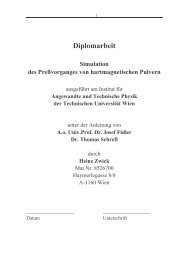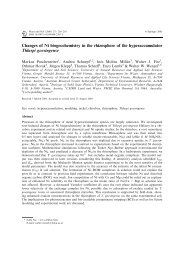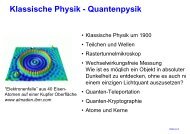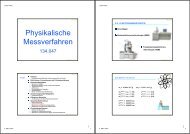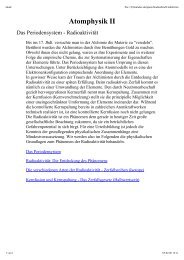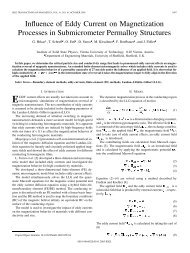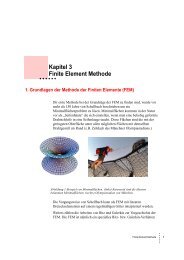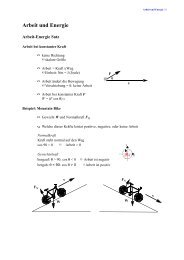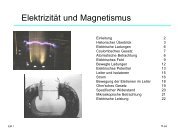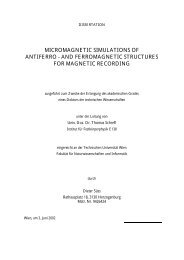Read Back Signals in Magnetic Recording - Research Group Fidler
Read Back Signals in Magnetic Recording - Research Group Fidler
Read Back Signals in Magnetic Recording - Research Group Fidler
Create successful ePaper yourself
Turn your PDF publications into a flip-book with our unique Google optimized e-Paper software.
<strong>Read</strong> Head Design<br />
The exchange bias field depends on the thicknesses of the antiferromagnet and the<br />
ferromagnetic layer. If the antiferromagnet is thicker than the ferromagnetic layer the<br />
exchange bias field decreases with the thickness of the ferromagnet t p like<br />
H<br />
J<br />
1<br />
t p<br />
− [34].<br />
ex<br />
ex = . (5.3)<br />
µ 0 Ms, ptp Here J ex is the exchange bias <strong>in</strong>teraction parameter [J/m 2 ]. This k<strong>in</strong>d of dependence leads to<br />
the conclusion, that the exchange anisotropy is an <strong>in</strong>terface effect. The maximum exchange<br />
bias field, which can be achieved for usual layer thicknesses, is about 0.05 T [20]. The<br />
exchange bias field decreases l<strong>in</strong>early with temperature [33]. Figure 5.1 shows the<br />
temperature dependence of the exchange bias field for NiFe(4-8nm)/Cu(2.2nm)/CoFe(2nm)/<br />
IrMn(15nm) sp<strong>in</strong> valves with different free layer thicknesses.<br />
The exchange bias effect is used to align the magnetization of the p<strong>in</strong>ned layer perpendicular<br />
to the record<strong>in</strong>g layer. The advantage of this bias scheme is that the free layer is not<br />
<strong>in</strong>fluenced by the antiferromagnet. Unfortunately the stray field of the p<strong>in</strong>ned layer causes an<br />
unwanted torsion of the free layer’s magnetization, which leads to a displacement of the<br />
equilibrium state towards the antiparallel state. The result is an asymmetric sensor curve.<br />
5.1.4 Synthetic Antiferromagnet<br />
To reduce the asymmetry of the transfer curve of the sp<strong>in</strong> valve, a stronger exchange bias is<br />
required. The limitation of the exchange bias field leads to an alternative sp<strong>in</strong> valve design<br />
[35]. Instead of the direct coupl<strong>in</strong>g of the antiferromagnet with the p<strong>in</strong>ned layer, an additional<br />
ferromagnetic layer is <strong>in</strong>troduced which is separated by a very th<strong>in</strong> (0.7-0.9 nm) nonmagnetic<br />
layer (mostly Ru) as shown <strong>in</strong> Figure 5.2. This layer structure is also called a synthetic<br />
antiferromagnet, because the p<strong>in</strong>ned layer is antiferromagnetically coupled with the additional<br />
ferromagnetic layer by <strong>in</strong>terlayer exchange coupl<strong>in</strong>g (IEC).<br />
61



